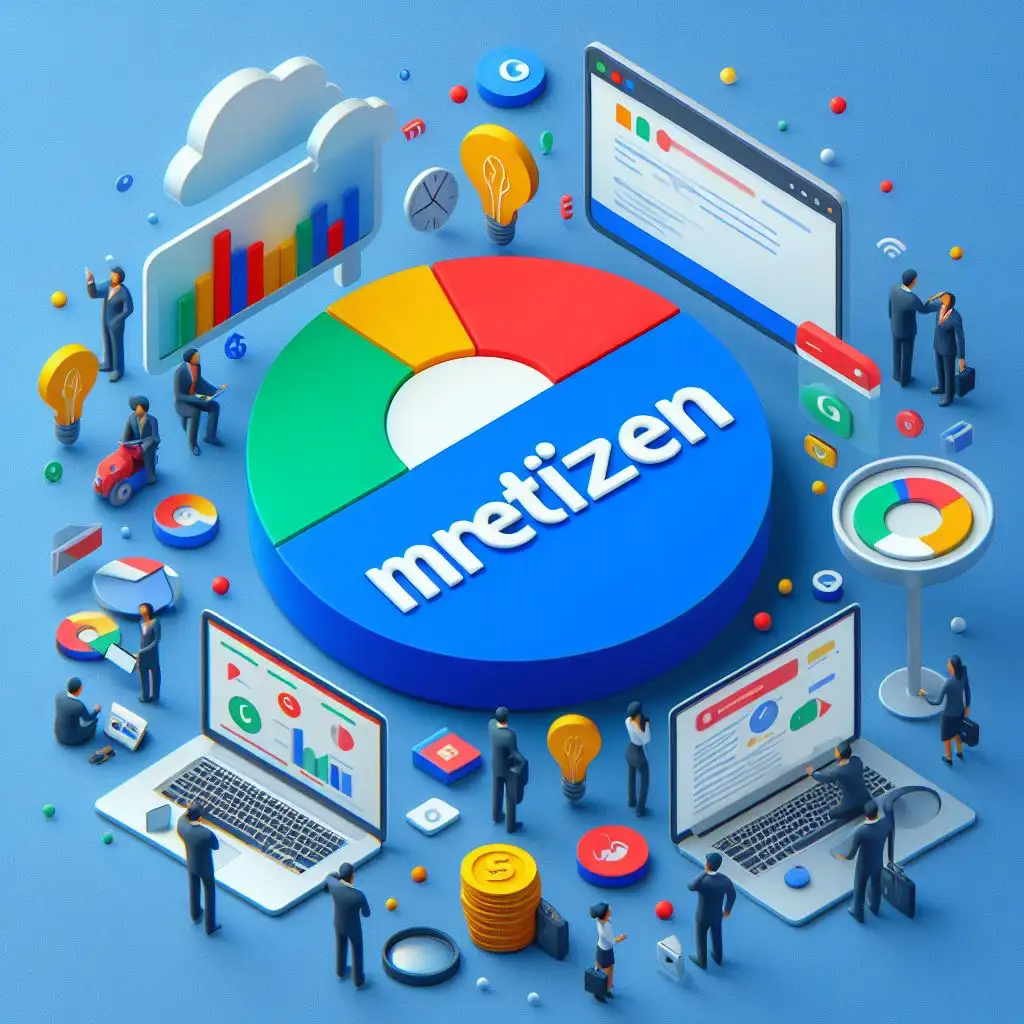This article examines in detail the transformational impact of AR on the development of smart cities. We will explore how these technologies can transform different aspects of city life, from transportation and public services to education, tourism and even urban planning. So, get ready to step into a world where information dances at your fingertips, and the city around you serves as canvases for one user-friendly, connected, and intelligent future
Cities are breathing ecosystems that are constantly changing to meet the needs of an ever-growing population. In recent years the concept of the "smart city" has emerged, harnessing the benefits of technology to improve employment, growth and overall quality of life for residents but is this a way to get digital wisdom and what about the city embedded loosely in the fabric? This is where augmented reality (AR) steps in, poised to be a game-changer in the way we experience and interact with our urban environments.
1. Smart Cities and AR: The Navigation Revolution
Imagine walking through a busy city, not with your face wrapped around it, but with arrows and helpful directions overlaying your real-world perspective This is the sea route to smart cities in the future, powered by augmented reality (AR).
- Here’s how AR could change how we get around in a smart city:
✓ Advanced visual guidance: An AR overlay on your smartphone camera or smart glasses can guide you through your environment. Imagine seeing arrows at buildings or roads pointing in the right direction, eliminating the need to constantly look down at the map.
✓ Real-time synthesis: Traffic jams, road closures, or even the location of a bike sharing nearby port can be displayed in your AR view. This allows for dynamic maneuvers, speeds arrival at the destination, and avoids unexpected delays.
✓ Accessibility: AR navigation can be a boon for visually impaired individuals. Imagine audio guides with illuminated paths or specific icons appearing on their AR interface, making it easier to navigate unfamiliar areas
✓ Indoor Navigation : GPS struggles indoors, but AR can shine. Your AR scene can be overlaid with architectural footage, through malls and airports, or even large public buildings equipped with precision displays.
✓ Personal Experience: An AR tour lets you learn what you want. A cyclist will see bike-friendly routes highlighted, while a pedestrian can point out scenic routes or points of interest along the way.
✓ Real-time synthesis: Traffic jams, road closures, or even the location of a bike sharing nearby port can be displayed in your AR view. This allows for dynamic maneuvers, speeds arrival at the destination, and avoids unexpected delays.
✓ Accessibility: AR navigation can be a boon for visually impaired individuals. Imagine audio guides with illuminated paths or specific icons appearing on their AR interface, making it easier to navigate unfamiliar areas
✓ Indoor Navigation : GPS struggles indoors, but AR can shine. Your AR scene can be overlaid with architectural footage, through malls and airports, or even large public buildings equipped with precision displays.
✓ Personal Experience: An AR tour lets you learn what you want. A cyclist will see bike-friendly routes highlighted, while a pedestrian can point out scenic routes or points of interest along the way.
2.Augmented reality: A public information powerhouse
Smart cities have started to tap into its potential for public information on demand.
- Here’s how AR could change how locals and visitors interact with the city:
✓ Connected cities: An AR overlay on a smartphone or smart glasses can provide a wide view of the user’s surroundings. Point your phone at the building and see an overview of its history, architecture, or even the stores inside.
✓ Treasure tourism: AR could transform city exploration. Imagine an arrow that seems to guide visitors to hidden gems, multiple audio languages that reveal historical information, or even a 3D reconstruction of what a landmark looked like
✓ Reimagining public transport: AR can take shape out of public transportation. Wear a mask at bus stops and watch the bus arrive in real time, or get AR panneuvering instructions on how to turn around or cycle to your destination.
✓ Empowering citizens: AR apps enable residents to interact with city services. Report potholed or damaged streetlights by simply pointing your phone at your phone, or report recycling programs and community events with a quick scan.
✓ Accessibility: AR can bridge the information gap for people with disabilities. Imagine visually impaired people receiving auditory descriptions of their surroundings, or hearing-impaired people receiving public advertisements translated into sign language via AR devices
✓ Treasure tourism: AR could transform city exploration. Imagine an arrow that seems to guide visitors to hidden gems, multiple audio languages that reveal historical information, or even a 3D reconstruction of what a landmark looked like
✓ Reimagining public transport: AR can take shape out of public transportation. Wear a mask at bus stops and watch the bus arrive in real time, or get AR panneuvering instructions on how to turn around or cycle to your destination.
✓ Empowering citizens: AR apps enable residents to interact with city services. Report potholed or damaged streetlights by simply pointing your phone at your phone, or report recycling programs and community events with a quick scan.
✓ Accessibility: AR can bridge the information gap for people with disabilities. Imagine visually impaired people receiving auditory descriptions of their surroundings, or hearing-impaired people receiving public advertisements translated into sign language via AR devices
- challenges and considerations.
While AR offers exciting possibilities, there are some challenges to consider:
✓ Concerns: Data security and user privacy need to be addressed to build public confidence in AR applications.
✓ Digital Divide: Not everyone has a smartphone or AR device. Cities need to find ways to make AR information accessible through kiosks or other means.
✓ Information overload: AR overlays should be designed to be clear and concise so that users are not overwhelmed with information.
✓ Concerns: Data security and user privacy need to be addressed to build public confidence in AR applications.
✓ Digital Divide: Not everyone has a smartphone or AR device. Cities need to find ways to make AR information accessible through kiosks or other means.
✓ Information overload: AR overlays should be designed to be clear and concise so that users are not overwhelmed with information.
- The future is upwards.
AR has great potential to change how people experience and interact with smart cities. By prioritizing accessibility, user experience and data security, cities can use AR to create a more informed, participatory and inclusive urban environment around .Augmented reality (AR) could be a game changer for public safety in smart cities. Here’s how to do it.
✓ Improving situational awareness for first responders: Imagine a firefighter using an AR system that displays real-time building layouts, identifies hot spots and identifies potential hazards in an emergency
And law enforcement can use AR glasses to get information about suspects, witness descriptions and criminal records with their vision.
✓ Citizen Empowerment:AR apps can provide citizens with real-time evacuation options and critical safety information on fires, earthquakes and other hazards.
✓ Residents can point their smartphones at specific locations to view crime statistics or areas to avoid, triggering preventative safety measures.
✓ Improving emergency response:AR can facilitate communication and information sharing between first responders at the scene of an incident.
✓ Improving situational awareness for first responders: Imagine a firefighter using an AR system that displays real-time building layouts, identifies hot spots and identifies potential hazards in an emergency
And law enforcement can use AR glasses to get information about suspects, witness descriptions and criminal records with their vision.
✓ Citizen Empowerment:AR apps can provide citizens with real-time evacuation options and critical safety information on fires, earthquakes and other hazards.
✓ Residents can point their smartphones at specific locations to view crime statistics or areas to avoid, triggering preventative safety measures.
✓ Improving emergency response:AR can facilitate communication and information sharing between first responders at the scene of an incident.
3.Public safety and Awareness
AR-based education programs can teach residents about fire safety, disaster preparedness, and suspicious activity detection.
Interactive AR simulations can train civilians in basic CPR or first aid techniques, saving lives in critical situations.
✓Challenges to consider:
•Widespread use of AR technology by the public and first responders must address cost and accessibility concerns.
•Privacy issues regarding data collection and use in AR applications should be handled with care.
Overall, AR has the potential to dramatically improve public safety in smart cities by enabling first responders, community engagement, and emergency management to get to the top of the mountain on the snow.
✓Here’s how AR could revolutionize infrastructure in smart cities:
•Advanced inspection and maintenance: Field workers with AR headsets can see critical infrastructure issues - pipes, cables, traffic lights - covered in plain sight. This detects issues such as cracks, leaks, or glitch fast and accurate Documentation and repair procedures can be displayed in AR view , which will simplify the repair.
•Advanced data collection: AR can be used to collect real-time consumption statistics. Imagine a sanitation worker wearing AR glasses that can send an alert to spot trash and garbage piles and remove them yourself. This allows for dynamic distribution, better waste collection methods and reduced unnecessary trips.
•Intelligent distribution systems: City planners can use AR to visualize spatial demands. Traffic congestion in an area? AR can display real-time traffic patterns and help change traffic lights or adjust display times. This data-driven approach ensures that resources are delivered where they are most needed.
Interactive AR simulations can train civilians in basic CPR or first aid techniques, saving lives in critical situations.
✓Challenges to consider:
•Widespread use of AR technology by the public and first responders must address cost and accessibility concerns.
•Privacy issues regarding data collection and use in AR applications should be handled with care.
Overall, AR has the potential to dramatically improve public safety in smart cities by enabling first responders, community engagement, and emergency management to get to the top of the mountain on the snow.
✓Here’s how AR could revolutionize infrastructure in smart cities:
•Advanced inspection and maintenance: Field workers with AR headsets can see critical infrastructure issues - pipes, cables, traffic lights - covered in plain sight. This detects issues such as cracks, leaks, or glitch fast and accurate Documentation and repair procedures can be displayed in AR view , which will simplify the repair.
•Advanced data collection: AR can be used to collect real-time consumption statistics. Imagine a sanitation worker wearing AR glasses that can send an alert to spot trash and garbage piles and remove them yourself. This allows for dynamic distribution, better waste collection methods and reduced unnecessary trips.
•Intelligent distribution systems: City planners can use AR to visualize spatial demands. Traffic congestion in an area? AR can display real-time traffic patterns and help change traffic lights or adjust display times. This data-driven approach ensures that resources are delivered where they are most needed.
4.Resource Management Made Easy
Imagine residents using an AR app to view information about nearby recycling centers or energy-efficient buildings. This creates a sense of ownership and encourages responsible consumption.
✓The benefits are obvious
The benefits of applying AR to consumer products are numerous:
•Increased efficiency: AR saves time and money by streamlining processes and optimizing resource allocation.
Improved decision-making: Data collected through AR enables informed decision-making, leading to more efficient use of resources.
•Increased transparency: AR can improve communication between city officials and residents, building trust and cooperation.
✓The future is upwards
AR technology is still evolving, but the potential of smart urban infrastructure is undeniable. As AR headsets become more affordable and user-friendly, their inclusion in city activities will be great. The result is that ? Cities that are efficient, sustainable, and ultimately livable for everyone.
5. Smart Cities and Augmented Reality: A Framework for Transformative Tourism
Imagine seeing a historical figure walking down the street come to life before your eyes, or pointing your phone at a building to get real-time information about its architecture and history. This is the magic of augmented reality (AR) in smart cities, transforming visitation from passive observation to an immersive and interactive experience.
✓Here, smart cities are using AR for revolutionary tourism.
1. Keeping History Alive:
AR overlays can reveal the past in historic sites. Visitors can view 3D reconstructions of buildings, see historical events unfolding in virtual reality, or even interact with fictional characters. Imagine seeing a bustling market where a once empty landscape has come to life!
2. Revealing Hidden Gems:
AR apps can act as interactive guides, revealing hidden trails, quirky museums, or off-the-beaten-path restaurants. Imagine pointing your phone at a random door and discovering a speakeasy hidden behind it!
3. Gamified Research:
AR can turn sightseeing into a fun game. Visitors can participate in a treasure hunt, answer trivia questions about exotic locations, or collect virtual souvenirs throughout the city. This makes research particularly attractive to younger visitors.
4. Access to everyone:
AR apps can provide real-time interpretation, audio description for visually impaired visitors, or sign language interpretation through an AR overlay. This makes the city more welcoming and accessible.
5. Sustainable Tourism Practices:
AR apps can highlight eco-friendly systems, hidden green spaces, or sustainable transportation. Visitors can plant real trees or participate in AR challenges
✓Here, smart cities are using AR for revolutionary tourism.
1. Keeping History Alive:
AR overlays can reveal the past in historic sites. Visitors can view 3D reconstructions of buildings, see historical events unfolding in virtual reality, or even interact with fictional characters. Imagine seeing a bustling market where a once empty landscape has come to life!
2. Revealing Hidden Gems:
AR apps can act as interactive guides, revealing hidden trails, quirky museums, or off-the-beaten-path restaurants. Imagine pointing your phone at a random door and discovering a speakeasy hidden behind it!
3. Gamified Research:
AR can turn sightseeing into a fun game. Visitors can participate in a treasure hunt, answer trivia questions about exotic locations, or collect virtual souvenirs throughout the city. This makes research particularly attractive to younger visitors.
4. Access to everyone:
AR apps can provide real-time interpretation, audio description for visually impaired visitors, or sign language interpretation through an AR overlay. This makes the city more welcoming and accessible.
5. Sustainable Tourism Practices:
AR apps can highlight eco-friendly systems, hidden green spaces, or sustainable transportation. Visitors can plant real trees or participate in AR challenges
6.Enhancing citizen engagement: How smart cities can use augmented reality (AR).
Augmented reality (AR) could be a game-changer for smart cities looking to increase civic engagement. Here’s how to do it.
1. Urban Planning Communication:
Imagine the public using AR apps to visualize the proposed improvements in 3D. This will determine how new buildings or features will blend into the existing environment, creating a sense of ownership and encouraging feedback.
2. Enhanced communication and education:
AR can transform public spaces into interactive media spaces. Citizens can point their smartphones to designated locations for real-time updates, event schedules, or historical information about specific locations. This provides a more dynamic and enjoyable way to learn about the city.
3. Gamified Public Interaction:
AR apps can be used to gamify public participation in projects such as sustainability goals. Imagine residents actually planting trees or participating in eco-friendly challenges, encouraging a sense of responsibility and involvement in an engaging way.
4. Improved accessibility and inclusion:
AR can bridge the gap between citizens with disabilities. Imagine visually impaired people speeding through the city with an AR cover, or hearing impaired people accessing information through AR text.
5. Joint Decision Making:
AR can be a powerful tool to facilitate communication in urban development projects. Residents can use AR tools to propose design changes and virtually collaborate with city planners, enabling inclusive decision-making.
✓Examples in action:
Many cities are already experimenting with AR programs. AR will display bus arrival times at bus stops in Seongnam, South Korea while Singapore explores AR for heritage and public education strategies.
1. Urban Planning Communication:
Imagine the public using AR apps to visualize the proposed improvements in 3D. This will determine how new buildings or features will blend into the existing environment, creating a sense of ownership and encouraging feedback.
2. Enhanced communication and education:
AR can transform public spaces into interactive media spaces. Citizens can point their smartphones to designated locations for real-time updates, event schedules, or historical information about specific locations. This provides a more dynamic and enjoyable way to learn about the city.
3. Gamified Public Interaction:
AR apps can be used to gamify public participation in projects such as sustainability goals. Imagine residents actually planting trees or participating in eco-friendly challenges, encouraging a sense of responsibility and involvement in an engaging way.
4. Improved accessibility and inclusion:
AR can bridge the gap between citizens with disabilities. Imagine visually impaired people speeding through the city with an AR cover, or hearing impaired people accessing information through AR text.
5. Joint Decision Making:
AR can be a powerful tool to facilitate communication in urban development projects. Residents can use AR tools to propose design changes and virtually collaborate with city planners, enabling inclusive decision-making.
✓Examples in action:
Many cities are already experimenting with AR programs. AR will display bus arrival times at bus stops in Seongnam, South Korea while Singapore explores AR for heritage and public education strategies.
conclusion
Augmented reality (AR) creates game-changing smart cities, transforming urban spaces into information-rich environments. By overlaying the physical world with digital data, AR empowers residents and visitors alike. From access to public transportation to improving infrastructure to enhancing cultural experiences and public safety, AR has the potential to transform how we interact with and experience our cities. As AR technology continues to evolve, smart cities that embrace its potential will be at the forefront of creating an efficient, sustainable and exciting urban future.


























